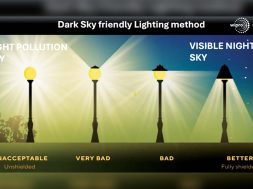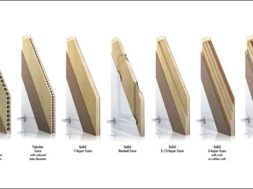In recent years, builders and architects have been increasingly concerned with the question of durability, resistance and optical appearance of paint systems. Exterior wall of buildings are made of mineral-based materials, which are characterised by their hydrophilic nature. Water ingress causes damage by transportation of soluble salts, darkening of the surface, microbial settlement and corrosion of steel reinforcement.
Silicone resin emulsion paints (SREP) provide low water absorption; they feature a very good breathability. Silicone resin binder is the agent mainly responsible for the very high durability, long-lasting hydrophobic effect and attractive appearance of this facade coating system.
The practical benefits of silicone resin emulsion coatings can most reliably be observed by examining the exteriors of buildings. The chief priority when examining the permanence of coatings is long-term observation of suitable reference objects. Of course it has to be mentioned, that the results strongly depend on the particular site, the particular environment and the direction of exposure.
Hydrophobizity protects: how to minimise microbial settlementM1icrobiological measurements, that consider the activity of microorganisms on exterior paints, such as the metabolic activity, adequately show the active microbial settlement which is significantly lower for the SREP (204 rlu*/10 cm2) as for the elastomeric dispersion paint (2658 rlu*/10 cm2). Generally spoken, the microbial growth is not high on the elastomeric dispersion paint, though the greying correlates well with the higher metabolic activity and the higher colony counts of the algae, which are (95 KBE/cm2) for the elastomeric latex paint and (0 KBE/ cm2) for the SREP.
The visibly higher greying of the elastomeric latex paint is confirmed in FE-SEM micrographs showing deposits of dust and soot and even big agglomerates of inorganic dust particles and microbial matter sticking together. In comparison, the representative SREP surface characterised by its hard and non-thermoplastic silicone resin binder in combination with a hard polymerdispersion (styrene acrylic) is without visible dirt accumulations to a large extent
Organic matter is rarely found, which is in accordance with the microbiologial investigations. Using highest resolutions, cell structures can be found, locally. Because of their nanoscale size, they cannot be normal bacteria at all which have to be 600 nm in size as minimum. Most likely, they can be interpreted to be inactive cells adapting to the bad livingconditions of the dry facedes. Humid conditions of th substrate world allow them growing to be active bacteria.
Durability for decades, the perfect protectionVisual examinations of more than 200 buildings, coated with a SREP paint on different substrates, were carried out in Europe by third party for nearly 30 years.
Although the data collected reveals an unprecedented set of data proving undoubtedly the long-lasting performance characteristics of SREP coatings as evidence by the assessment of numerous buildings in a great variety of different environments.
Cookie Consent
We use cookies to personalize your experience. By continuing to visit this website you agree to our Terms & Conditions, Privacy Policy and Cookie Policy.









